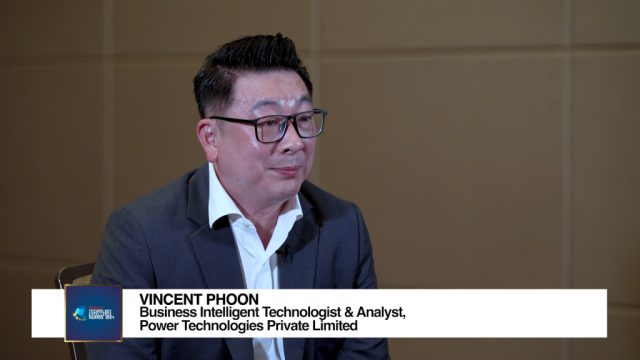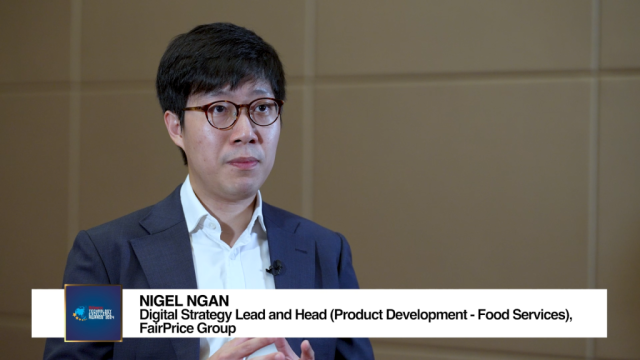
Demand for “clean gas” to boost offshore marine growth in Asia
Hear the fishes clap their fins.
The soaring demand for liquefied natural gas (LNG) across Asia is driving major new investments into exploration and infrastructure capabilities. This will stimulate growth in the region’s rapidly expanding offshore and marine sector as new developments will require additional offshore assets and support services from regional players.
Furthermore, due to the synergies between Asia’s gas reserves and ship-design capabilities, the region could pioneer a long-term move towards more LNG utilisation to reduce vessel emissions and fuel bills of the offshore support vessels supporting these projects. However, seizing these growth opportunities and moving towards gas-powered vessels of the future, will require multi-party collaboration between energy companies, vessel operators, shipyards, technology providers, marine fuel suppliers and governments to realise the mutual benefits.
The consensus
This was the consensus reached at a recent industry roundtable in Singapore, comprising experts from across Asia’s offshore marine industry, to identify the major growth drivers and opportunities of the sector in Singapore and around the region. Hosted by Seatrade, the event was a curtain-raiser to the first Seatrade Offshore Marine Asia conference and exhibition that will take place in Singapore between the 25 to 27 April 2012 to complement Maritime Week.
Demonstrating a strong appetite to source and convert LNG, in 2010, two of the three largest countries based on total liquefaction capacity came from within the region, in the form of Indonesia and Malaysia . Globally, Japan leads with the most LNG receiving terminals in the world, 28 in operation. There are several terminals currently being built within the region. Singapore is looking to position itself as a regional LNG trading hub and recently announced plans for an LNG terminal on Jurong Island worth S$1.7 billion while State-run Indian Oil Corporation (IOC) has signed an agreement with the Dhamra Port Corporation (DPCL) to develop an LNG terminal on the east coast of India. There are other LNG terminals proposed for Indonesia, Malaysia and Thailand. Vietnam’s first LNG import terminal is also expected to be completed by 2015. This demonstrates a desire to adopt this revolutionary fuel source and these investments in LNG capabilities and infrastructure will generate demand for more marine assets, such as rigs, offshore support vessels and supporting technology which the region, with its capability to provide high standards of support services such as innovation into research and development, shipbuilding and design as well as the manufacture of drilling rigs and support vessels, is well positioned.
LNG to replace conventional shipping fuels
Simultaneously, the increasing numbers of offshore support vessels servicing these projects are facing a major fuel challenge. Incoming global International Maritime Organisation (IMO) legislation will require vessels to cut sulphur (SOx) emissions to 0.1% and reduce nitrogen oxide (NOx) on new vessels by 80% by 2015. This poses a complex and unresolved issue for the international marine industry and will require major changes for vessel operators working on offshore projects in the likes of China and Malaysia as these countries will be required to implement increasingly stringent emissions control areas. Combined with this, vessel operators, including those in the offshore sector, are facing continued high and volatile marine fuel prices in excess of $700 per tonne, and prices are set to rise further as requirements to use cleaner marine fuels are introduced within the Asia Pacific.
Capt. Michael Meade, CEO, M3 Marine Group Pte Ltd explained: “Replacing conventional shipping fuel with LNG could hold the key to a cost effective and environmentally efficient industry and Asian operators are looking to lead the way. LNG offers significant benefits over traditional fossil fuels - it is cost-efficient to transport over long distances by seas and is a clean-burning fuel so contributes to reducing emissions. The marine industry has been engrained at the heart of the region’s economy for decades, and by increasing its ability to produce and to utilise LNG in vessels being built, South East Asia could lead the way in terms of innovation in this sector.”
Research and fuel spot price dynamics show that LNG could present a more financially and environmentally favourable solution compared to using scarce distillate fuels or emissions-cleaning technologies, providing the supply and infrastructure can be established. This is already being seen in Norway where many offshore support vessels are effectively using LNG as a fuel source. However, with fuel volumes likely to soar in the South and East of Asia, energy providers in the region are well-placed to address this by expanding their product portfolio and ability to supply and potentially produce LNG-based marine fuel. Collectively this creates a symbiotic relationship of mutual demand between LNG suppliers and the vessels that are contracted to support exploration.
Increasing LNG capabilities and usage on board offshore vessels requires overcoming a myriad of challenges which requires cross-party collaboration across the energy and marine sectors.
The need for collaboration
Denys Hickey, Head of Energy and Offshore Group, Asia Pacific Region, Ince & Co highlighted: “For South East Asia to really innovate in the use of LNG as a fuel there needs to be a collaborative effort. Ship owners, yards and engine builders need to invest in the technology required and bunkering facilities need to be constructed to allow LNG to become viable as a fuel source”.
South East Asia faces certain challenges in terms of its capacity to produce and store LNG. Existing LNG terminal and storage facilities are still small in size and number and distribution networks are limited. Also, the majority of vessels are not designed to store or use LNG which could mean major capital expenditure to convert. The cost to retrofit existing vessels to use LNG is high which means that storage is likely to only be incorporated into new builds. However, the group flagged that a more viable alternative option would be to introduce LNG-diesel hybrid vessels, which could enable greater flexibility to use alternative fuel sources in ports around the region that currently do supply LNG. Similarly the sentiment of the discussion highlighted a greater need for government tax incentives and investment to stimulate the growth of LNG production and use in vessels in the region.
Chris Grieveson, Partner, Wikborg Rein concluded: “When talking about fuelling ships, South East Asia is rich in gas and has the technical knowledge to build vessels designed to utilise LNG. If, as an industry, we work together there is a real opportunity for the region to convert to 100 percent LNG within the next South East Asia is perfectly positioned to lead in the field of LNG production and to spur the growth of a lucrative commercial ecosystem for the supporting offshore and marine assets. This will require mutual commitment and investment but the signs are positive that it can be achieved. Furthermore, significant investment, further research and collaboration would enable offshore vessels built and used in the region to utilise LNG as a superior fuel source.
























 Advertise
Advertise









